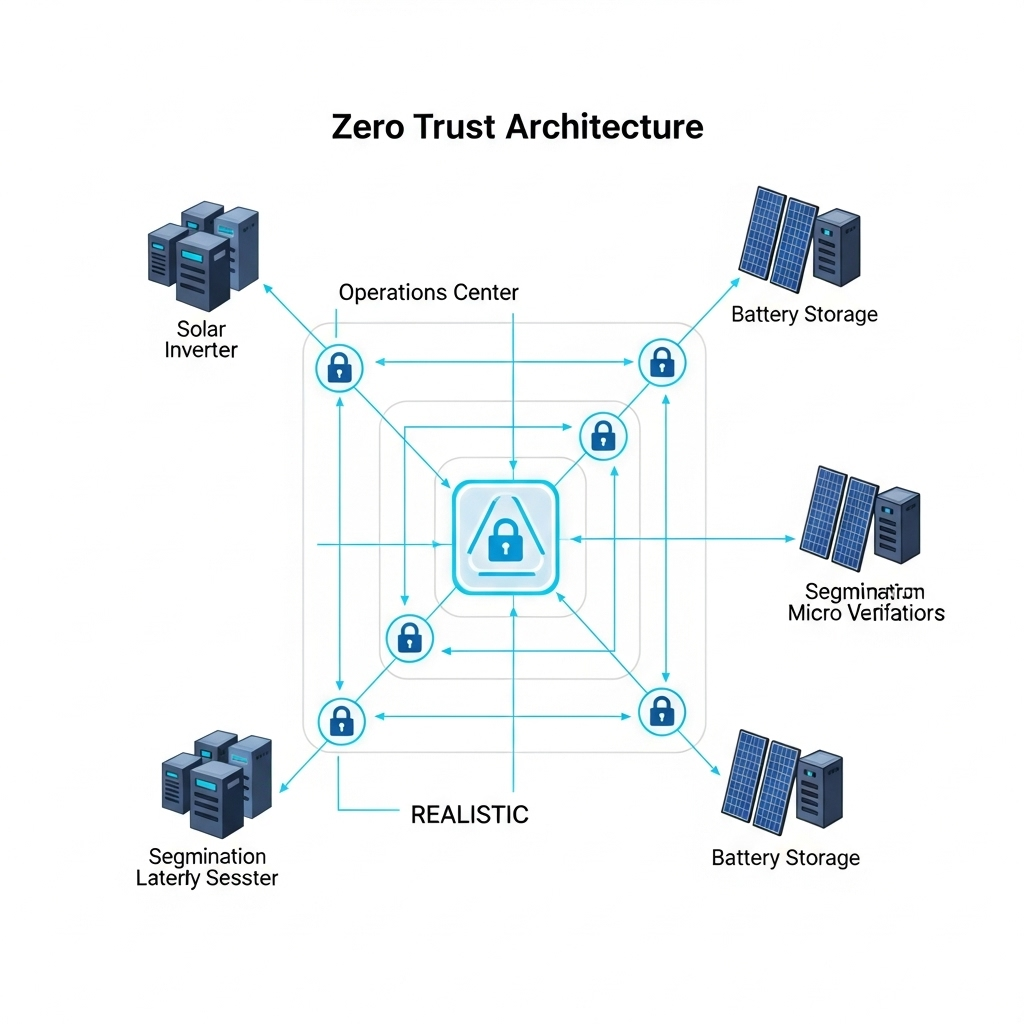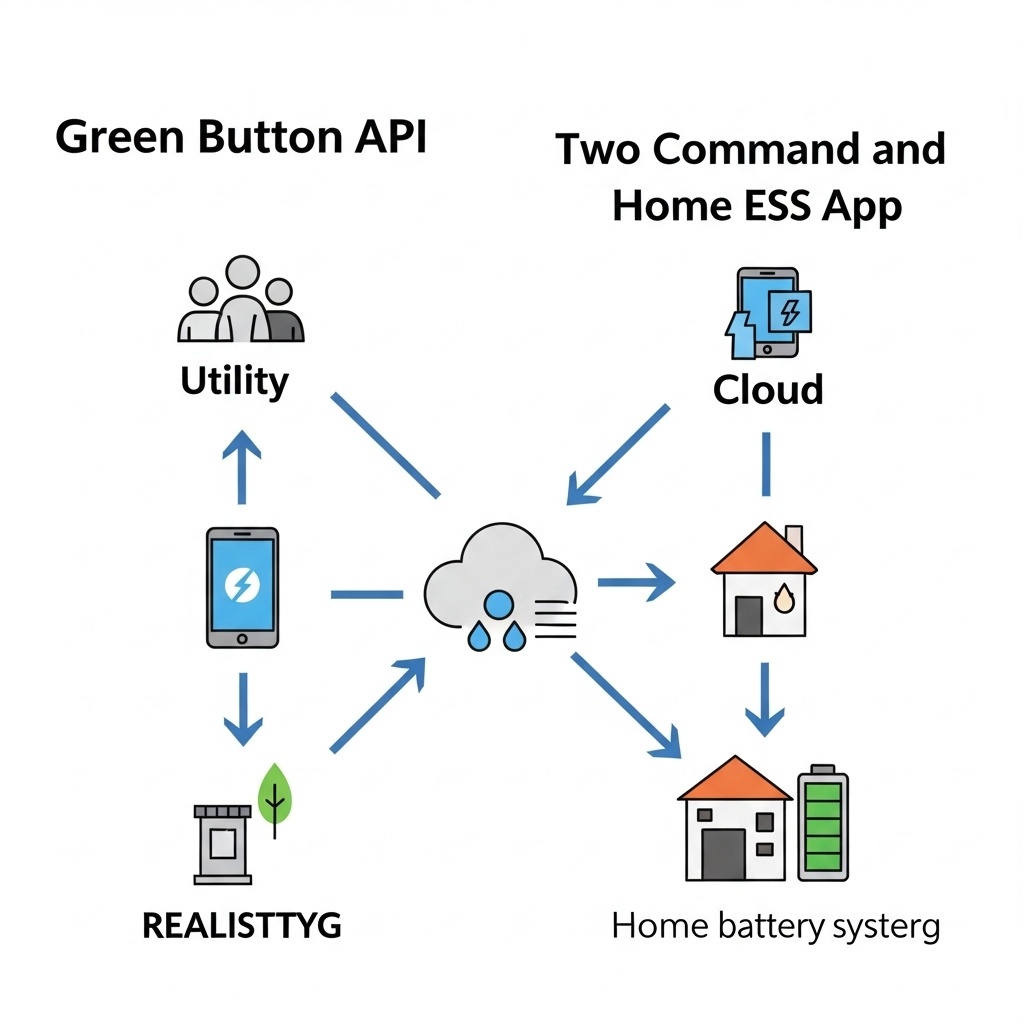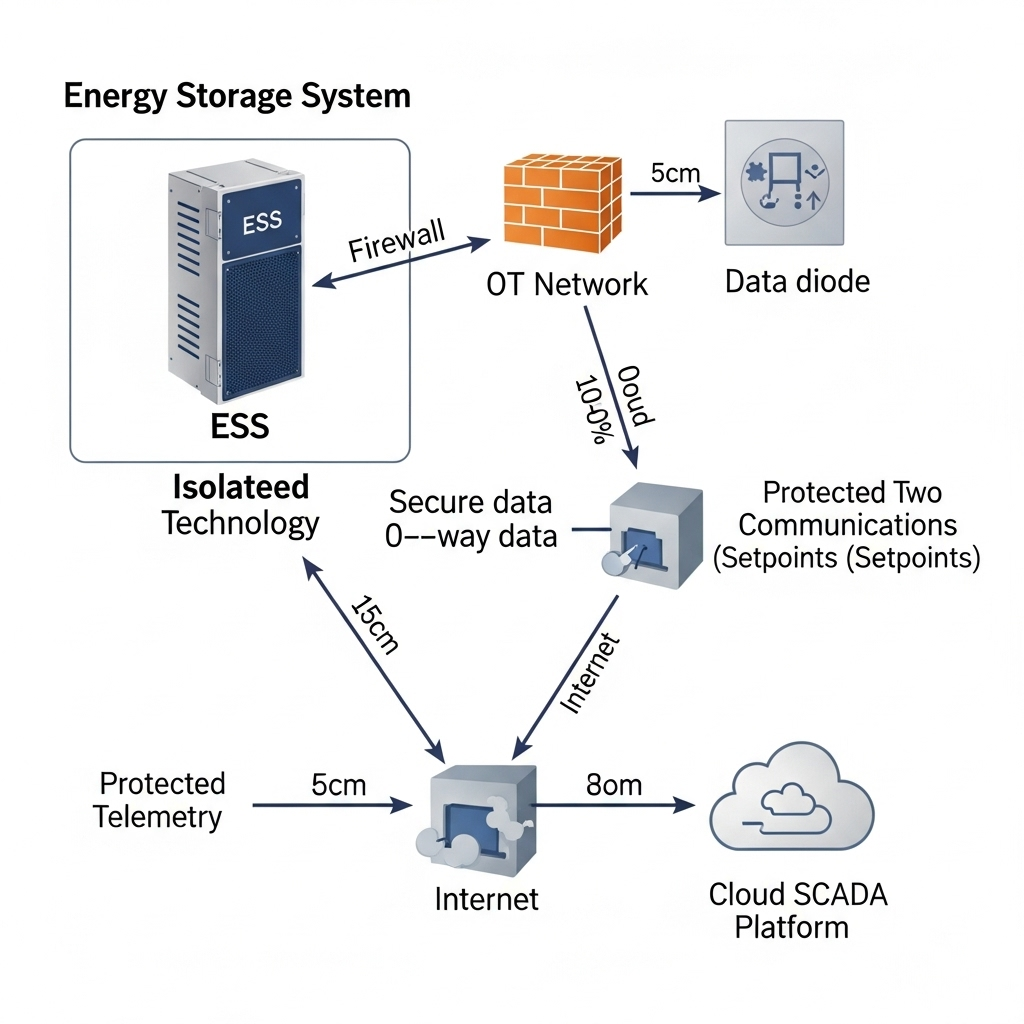The rapid expansion of Distributed Energy Resources (DER), such as solar inverters and Energy Storage Systems (ESS), is transforming our power grid. While this shift brings immense benefits, it also creates a vast and complex attack surface. Traditional security models, which rely on building a strong perimeter, are no longer adequate. A new approach is needed. This is where a Zero Trust architecture provides a robust framework for modern energy systems.
Understanding the Zero Trust Framework for DER
Zero Trust operates on a simple but powerful principle: never trust, always verify. It assumes that threats can exist both outside and inside the network. Every access request, whether from a user or a device, must be authenticated, authorized, and encrypted before access is granted. This model is a fundamental shift from the old 'trust but verify' mindset.
Core Principles of Zero Trust
The framework is built on three core pillars:
- Continuous Verification: Authenticate and authorize every access request based on all available data points, including user identity, device health, location, and the specific service being requested.
- Least Privilege Access: Grant users and devices the minimum level of access they need to perform their specific function. This limits the potential damage if an account or device is compromised.
- Assume Breach: Operate as if a breach has already occurred. This leads to designing networks with micro-segmentation to prevent threats from moving laterally across the system.
Why Inverter-ESS Fleets Need Zero Trust
Inverter-based resources are no longer simple power conversion devices; they are sophisticated, grid-interactive computers. As a study from the International Renewable Energy Agency (IRENA) highlights, effective real-time communication is key for DER to provide critical grid services. This interconnectedness, however, makes them targets for cyberattacks. A compromised inverter fleet could be manipulated to inject harmful frequencies, disrupt power flow, or cause widespread instability. A Zero Trust model directly addresses these risks by verifying every command and data point exchanged between an inverter, the ESS, and the grid operator.
A Phased Roadmap to Implementing Zero Trust
Adopting Zero Trust is a strategic process, not a one-time product installation. A phased approach allows organizations to build a resilient security posture over time without disrupting operations. Here is a practical roadmap for your inverter and ESS fleets.
Phase 1: Achieve Total Visibility and Asset Management
You cannot protect what you cannot see. The first step is to create a complete and dynamic inventory of every device in your network. This includes every inverter, battery system, communication gateway, and sensor. Automated discovery tools are invaluable here, as they can identify and classify assets in real-time. This foundational visibility allows you to understand your security landscape and identify unmanaged or rogue devices that pose a risk.
Phase 2: Secure Identities and Enforce Strong Access Control
Once you know what’s on your network, the next step is to control who and what can access it. This involves moving beyond weak, default, or pre-shared keys. Implementing a strong identity and access management (IAM) system is critical. For large-scale DER fleets, Public Key Infrastructure (PKI) offers a scalable and secure method for issuing and managing unique digital identities for each device. Every communication should then be subject to strict access policies based on the principle of least privilege.
Phase 3: Micro-segment the Network
Micro-segmentation involves dividing your network into small, isolated zones to contain potential threats. If one inverter is compromised, micro-segmentation prevents the attacker from moving laterally to compromise the entire fleet. This can be achieved with next-generation firewalls or software-defined networking (SDN), which allows you to create and enforce granular security policies based on device identity rather than just IP addresses. For example, a group of inverters in one geographic area can be placed in its own segment, completely isolated from others except for specific, authorized communication channels to the control center.
Continuous Monitoring, Analytics, and Response
Zero Trust is not a 'set it and forget it' solution. It requires constant vigilance. The final phase involves deploying advanced tools to monitor activity, analyze data for threats, and automate responses.
Real-time Threat Detection and Automated Response
Continuously monitor network traffic and device behavior for anomalies. Modern security platforms use machine learning to detect subtle deviations from normal operations that could indicate a compromise. When a threat is detected, an automated response can be triggered. For instance, a system could automatically quarantine a suspicious inverter, blocking its network access until it can be investigated. This rapid containment minimizes the potential impact on the grid.
Connecting Security with Performance Analytics
Security and operational performance are deeply intertwined. A sudden drop in an inverter's output could be a maintenance issue or a sign of a cyberattack. By integrating security data with operational metrics, operators gain a more complete picture. Understanding the baseline performance of your assets is key. A detailed analysis of key metrics, as outlined in this guide on solar storage performance, helps establish what 'normal' looks like. This makes it easier to spot security-driven anomalies, such as unexpected shutdowns or manipulated data reporting, that might otherwise be missed.
| Feature | Traditional Perimeter Security | Zero Trust Architecture |
|---|---|---|
| Trust Assumption | Trusts devices and users inside the network by default. | Never trusts; assumes the network is always hostile. |
| Access Control | Broad access granted after initial authentication. | Strict least-privilege access, granted per session. |
| Network Design | Monolithic network with a strong outer wall. | Micro-segmented to isolate assets and limit threat movement. |
| Verification | Verifies once at the perimeter. | Continuously verifies identity, device, and context. |
| Primary Focus | Preventing initial intrusion. | Assuming breach and minimizing impact. |
Building a Resilient Energy Future
As the grid becomes more decentralized, the security of each connected component becomes paramount. A Zero Trust model provides a necessary and practical framework for protecting inverter and ESS fleets from sophisticated cyber threats. It moves security from a static perimeter defense to a dynamic, identity-centric approach fit for the modern energy landscape. According to the International Energy Agency, ensuring the quality and appropriateness of technology is a cornerstone of effective VRE deployment. This principle extends directly to cybersecurity. Implementing Zero Trust is a strategic commitment to building a more secure, reliable, and resilient energy future for everyone. It's about ensuring that the distributed grid is not only powerful but also protected.
Disclaimer: This information is for educational purposes only and does not constitute financial, legal, or investment advice. Always consult with a qualified professional before making decisions about your energy systems or security infrastructure.
Frequently Asked Questions
Is Zero Trust the same as using a firewall?
No. A firewall is a component within a security architecture, typically used to create a perimeter. Zero Trust is a strategic framework that assumes threats can exist anywhere, including inside the firewall's perimeter. It requires verification for every request, regardless of its origin, while a traditional firewall often trusts internal traffic by default.
Can Zero Trust be applied to older, legacy inverters?
Yes. While newer inverters may have built-in Zero Trust capabilities, legacy devices can be protected using compensating controls. This involves placing them in a micro-segment protected by a gateway or next-generation firewall that enforces Zero Trust policies on their behalf. All traffic to and from the legacy device is inspected and verified by this gateway.
How does Zero Trust impact system performance?
When implemented correctly, the impact on performance is minimal. Modern cryptographic hardware and efficient, secure protocols are designed for high-speed verification. The security benefits of preventing a potentially catastrophic breach far outweigh any minor increases in latency, which are often negligible in well-designed systems.
What is the first step to implementing Zero Trust for my ESS fleet?
The first and most critical step is achieving full visibility. You must create a complete and accurate inventory of all your assets, including inverters, batteries, controllers, and network devices. This foundational step informs all subsequent security policies, from identity management to micro-segmentation.





Leave a comment
All comments are moderated before being published.
This site is protected by hCaptcha and the hCaptcha Privacy Policy and Terms of Service apply.